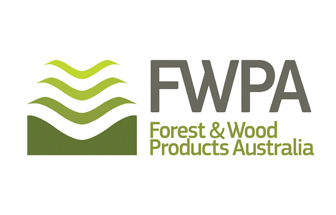STRONG SUPPLY MESSAGE FOR INDUSTRY
AS MOTHER OF LOG JAMS HITS PORTLAND
PSSST! Want a few thousand tonnes of softwood logs? Take ‘em … they’re free … or seem to be. Just arrange the transport.
What to do with the massive stockpile at Victoria’s Portland port – reportedly anywhere between 60,000 and 200,000 tonnes – has been a Chinese puzzle for industry since the imports ban late last year on a raft of Australian commodities, including logs.
Like stale bread, the logs are fast approaching their used-by date and port authorities want them removed as port charges mount up.
Logs lifted onto one ship just as the bans took effect were quickly and roughly off-loaded causing damage to the timber.
Processors in the Green Triangle say there have been no offers for them to access the logs from forest growers – even while they were in reasonable condition.
A plan to install a processor at the port was abandoned because the low quality of chips from the deteriorating logs were unacceptable in the market.
Small loads were transported to a pulp processor in NSW but the project was abandoned.
Softwood log exports, while not near the level of two or three years ago, had picked up at Portland and have traditionally been a strength for the port.
China makes up more than 70% of the export market for logs, and a similar amount or more of all exports from the port is destined for that country.
The whole process at Portland is about jobs and the economy and it’s absolutely critical for the federal government to go through the issue.
At least 18,000 jobs in the Green Triangle region are dependent on the forest industry, which had been shown to have an $800 million economic benefit.
The situation at Portland again brings into focus the future problem of a major log supply shortage in the near future for domestic processors. And it must be realised also that imported engineered timber will not always be there in big quantities to fill the supply gap. Early 2021 is challenging for the timber supply chain in Britain and Europe, exacerbated by pandemic-related issues and massive changes in market dynamics and high levels of global demand for timber and wood products.
This is setting the scene for continuing tight timber supply conditions for Australia’s traditional suppliers, certainly through to the second quarter of 2021, if not longer.
Early in the pandemic many European sawmills were temporarily shut. Lockdowns across the UK and Europe then produced a massive surge in demand for DIY projects which has impacted on the construction sector.
Demand in Europe, and especially the US, has also affected the amount of material available in traditionally well-stocked markets.
In Australia, a draft forest industry code of practice widely accepted by the sector, the South Australian Timber Processors Association submits that forest growers should commit to a policy of supplying the raw material requirements of Australia’s domestic wood processing industry.
The code governs plantation owners and their dealings with domestic processing facilities including prospective customers. This follows the significant increases in the export of wood fibre from the port of Portland since 2012, averaging 1.7 million green metric tonnes a year over the last five years where much of this fibre has been exported at the expense of current and potentially future domestic demand from domestic wood processors.
That Australia should be processing its own wood rather than exporting it – or importing it – remains a vexed question the industry must address.
Until the China log ban, producers in South Australia, Victoria, Queensland and Tasmania were getting better returns by exporting wood.
Someone has to sit down with a pencil and paper and work out a plan – and a solution –, quickly.
JIM BOWDEN










